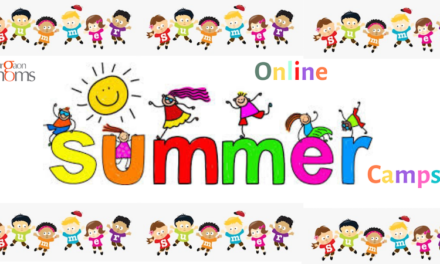As children grow older, imparting them with the appropriate life skills becomes more important. Children must be taught and given a chance to learn the basic everyday skills that can help them become independent individuals. One such important skill is that of telling time. But telling time even though an important skill, can be a tricky skill for all children to learn as it involves the ability to plan and multitask and have an integral working memory.
Telling time can initially be a tricky skill for kids to master. However, once learnt, kids can in no time excel in this as well. Teaching kids to tell time can sometimes be challenging for adults as children need to have learnt the sub skills required to read time on the clock. These skills include:
- Understanding the concept of past, present, and future.
- Using the language of passage of time example before, after, next, later.
- Knowing the hours hand, minute hand, and the seconds hand in a clock.
- Knowing the concept of yesterday, today and tomorrow
- Understanding what a.m. and p. m. mean
- Knowing the sequence of the days and months.
At HP Print Learn Centre we have designed learning engagements in the form of worksheets and games that will help your child master the concept of time with ease. The HP Print Learn Centre platform also has video tutorials that teach parents how to engage with their children and teach these concepts with hands on activities along with worksheets.
HP Print Learn Centre offers a wide selection of worksheets for the ages of 3-12 years across various subjects. These worksheets follow a well thought LAR approach (Learn Apply Resolve) that helps develop crucial skills in young learners. The worksheets are designed by experts and target specific learning outcomes that are age appropriate.
Here are 5 ways of teaching your kid to tell time with the help of clock worksheets:
- Start by introducing kids to the different kinds of clocks we see around us. Right from the traditional cuckoo clocks to the modern digital ones, giving them the opportunity to understand the history and evolution of clocks will develop a greater interest for the concept. You may also give them a day and ask them to observe the different kinds of clocks they see throughout the day at the places they visit. You may then follow this activity with a quick discussion on their observations – the similarities and differences between the clocks back then and now,, the pros and cons etc. Pair this up with simple clock and time worksheets like this one.

- Bring in some element of DIY to make it more fun. Support your kid in making their own clock from scratch. Engaging in this activity, will familiarise them with things such as the hours, minute, and the seconds hands along with knowing how the numbers on a clock are placed too. Each time you wish to practise the concept of telling time, use this handmade clock as a tool to support your child’s learning.
- A great way to check their knowledge is by making use of blank clock worksheets. Have multiple copies of blank clock worksheets ready for this activity. Ask your children to put their thinking hats on and first answer questions such as – What time does your school start? What time do you go to play? What time do you wake up? As they answer every question, ask them to show the time by drawing on the clock worksheets.

- To challenge your child a little more, teach your kids about the correct usage of a.m. and p.m. This will help them relate to the concept of time better. Talk about the various daily routine activities that you and your child do during a.m. versus the p.m. The knowledge of this will also help them identify and group their routine activities accordingly. Clubbing it with a clock reading worksheet like this can be useful in perfecting telling time.

- Teaching kids how to tell time can be very beneficial as this can give them an idea of how their day would look like. They feel the most comfortable when things are predictable. As such, once they start reading time, they can quickly get a hold of their daily schedule and prepare themselves. They will know when it’s time to do what and there may even be times when they remind you that it’s time too! You can also use an analog alarm clock to set alarms with your kid for the events that excite them. Counting down the number of hours will keep them engaged, thrilled and give them a repeated practice of telling time. Clock time worksheets like these can be a helping hand in teaching kids to tell time appropriately.
The worksheets at HP Print Learn Centre can be used in creative ways as they encompass all the areas of learning that are fundamental to the child’s learning journey and give them an all-round learning experience.








